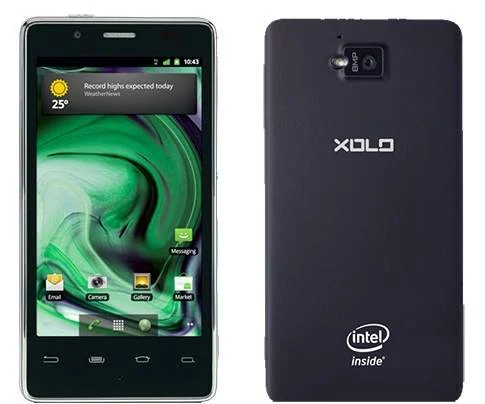Intel says it is accelerating its mobile computing push with new Atom chips for Android smartphones and tablets, along with a multimode-multiband LTE platform due to ship in the first half of 2013.
According to Intel VP Hermann Eul, the company’s new Atom processor platform (“Clover Trail+”) and smartphone reference design offers low-power and long battery life that rivals today’s most popular ARM-powered Android phones.

“Our second-generation product delivers double the compute performance and up to three times the graphics capabilities, all while maintaining competitive low power,” Eul explained at an MWC keynote.
“As we transition to 22nm Atom SoCs later this year, we will take full advantage of the broad spectrum of capabilities enabled by our design, architecture, 22nm tri-gate transistor technology, and leading-edge manufacturing to further accelerate our position.”
Eul also confirmed that the new Atom platform will support advanced imaging capabilities for two on-board cameras, with a primary camera sensor up to 16 megapixels. Meanwhile, the imaging system will enable panorama capture, a 15 frame-per-second burst mode for 8 megapixel photos, real-time facial detection and recognition, and mobile HDR image capture with de-ghosting for clearer pictures in flight.
“With WUXGA display support of 1900×1200, the platform will facilitate larger-screen Android tablet designs,” he noted.
“All this with support for Android 4.2 (Jelly Bean), Intel Wireless Display Technology and HSPA+ at 42Mbps.”
Building on Intel’s Atom processor platform (“Clover Trail+”), Eul also highlighted Santa Clara’s forthcoming 22nm smartphone Atom SoC (“Merrifield”), which is based on the company’s 22nm process and an “entirely new” Atom microarchitecture that will help enable increased smartphone performance, power efficiency and battery life.
And last, but certainly not least, Eul discussed Intel’s 4G LTE strategy, which will finally allow Intel-powered smartphones to hit the streets in the U.S.
“Our XMM 7160 is one of the world’s smallest and lowest-power multimode-multiband LTE solutions (LTE / DC-HSPA+ / EDGE), supporting multiple devices including smartphones, tablets and Ultrabooks,” Eul confirmed.
“The 7160 global modem supports 15 LTE bands simultaneously, more than any other in-market [platform]. It also includes a highly configurable RF architecture running real time algorithms for envelope tracking and antenna tuning that enables cost-efficient multiband configurations, extended battery life, and global roaming in a single [package].”






